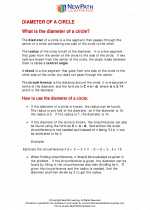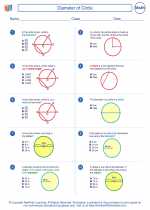Triangular Prism
A triangular prism is a three-dimensional shape with two triangular bases and three rectangular faces. The triangular bases are parallel to each other, and the three rectangular faces connect the corresponding edges of the two triangular bases. The height of the prism is the perpendicular distance between the two triangular bases.
Properties of a Triangular Prism:
1. It has 6 vertices, 9 edges, and 5 faces.
2. The two triangular bases are congruent (same size and shape).
3. The three rectangular faces are perpendicular to the triangular bases.
4. The height of the prism is the perpendicular distance between the two triangular bases.
Formulas for Triangular Prism:
1. Surface Area: 2 * base area + perimeter of base * height
Example:
Find the surface area and volume of a triangular prism with a base area of 12 square units, a base perimeter of 15 units, and a height of 8 units.
Surface Area = 2 * 12 + 15 * 8 = 24 + 120 = 144 square units
Volume = 12 * 8 = 96 cubic units
Study Guide:
1. Identify the properties of a triangular prism, including its vertices, edges, and faces.
2. Understand the relationship between the bases, height, and side faces of a triangular prism.
3. Memorize the formulas for calculating the surface area and volume of a triangular prism.
4. Practice solving problems involving the surface area and volume of triangular prisms.
5. Draw and visualize different examples of triangular prisms to reinforce your understanding of the concept.
6. Use interactive online resources and manipulatives to explore and manipulate triangular prisms in a virtual environment.
7. Review and apply the concept of triangular prisms in real-life scenarios, such as calculating the volume of a package or the surface area of a building with a triangular prism shape.
.◂Math Worksheets and Study Guides Sixth Grade. Diameter of Circle

 Worksheet/Answer key
Worksheet/Answer key
 Worksheet/Answer key
Worksheet/Answer key
 Worksheet/Answer key
Worksheet/Answer key
